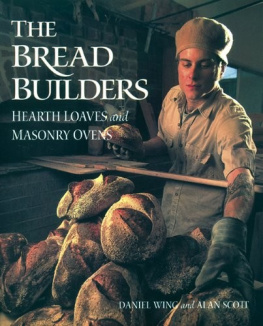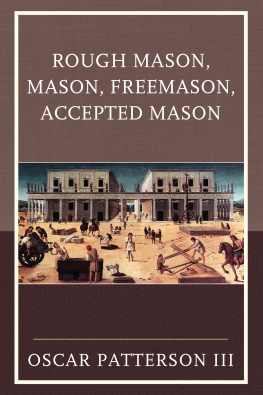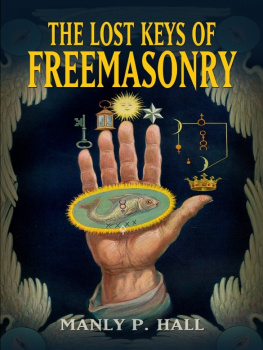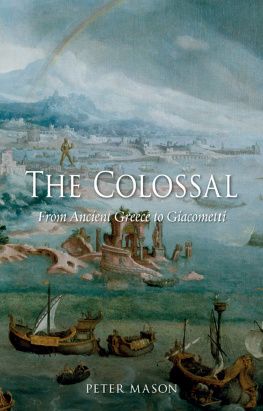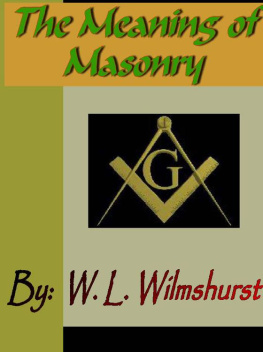JOSEPH FORT NEWTON, Litt . D.
GRAND LODGE OF IOWA
When I was a King and a Mason
A master proved and skilled,
I cleared me ground for a palace
Such as a King should build.
I decreed and cut down to my levels,
Presently, under the silt,
I came on the wreck of a palace
Such as a King had built!
Kipling
CEDAR RAPIDS IOWA
THE TORCH PRESS
NINETEEN FIFTEEN
Copyright, 1914
By Joseph Fort Newton
First Printing, December, 1914
To
The Memory of
THEODORE SUTTON PARVIN
Founder of the Library of the Grand Lodge
of Iowa, with Reverence and Gratitude; to
LOUIS BLOCK
Past Grand Master of Masons in Iowa, dear Friend
and Fellow-worker, who initiated and inspired
this study, with Love and Goodwill; and
to the
YOUNG MASONS
Our Hope and Pride, for whom
this book was written
With
Fraternal Greeting
THE ANTEROOM
Fourteen years ago the writer of this volume entered the temple of Freemasonry, and that date stands out in memory as one of the most significant days in his life. There was a little spread on the night of his raising, and, as is the custom, the candidate was asked to give his impressions of the Order. Among other things, he made request to know if there was any little book which would tell a young man the things he would most like to know about Masonrywhat it was, whence it came, what it teaches, and what it is trying to do in the world? No one knew of such a book at that time, nor has any been found to meet a need which many must have felt before and since. By an odd coincidence, it has fallen to the lot of the author to write the little book for which he made request fourteen years ago.
This bit of reminiscence explains the purpose of the present volume, and every book must be judged by its spirit and purpose, not less than by its style and contents. Written as a commission from the Grand Lodge of Iowa, and approved by that Grand body, a copy of this book is to be presented to every man upon whom the degree of Master Mason is conferred within this Grand Jurisdiction. Naturally this intention has determined the method and arrangement of the book, as well as the matter it contains; its aim being to tell a young man entering the order the antecedents of Masonry, its development, its philosophy, its mission, and its ideal. Keeping this purpose always in mind, the effort has been to prepare a brief, simple, and vivid account of the origin, growth, and teaching of the Order, so written as to provoke a deeper interest in and a more earnest study of its story and its service to mankind.
No work of this kind has been undertaken, so far as is known, by any Grand Lodge in this country or abroadat least, not since the old Pocket Companion, and other such works in the earlier times; and this is the more strange from the fact that the need of it is so obvious, and its possibilities so fruitful and important. Every one who has looked into the vast literature of Masonry must often have felt the need of a concise, compact, yet comprehensive survey to clear the path and light the way. Especially must those feel such a need who are not accustomed to traverse long and involved periods of history, and more especially those who have neither the time nor the opportunity to sift ponderous volumes to find out the facts. Much of our literatureindeed, by far the larger part of itwas written before the methods of scientific study had arrived, and while it fascinates, it does not convince those who are used to the more critical habits of research. Consequently, without knowing it, some of our most earnest Masonic writers have made the Order a target for ridicule by their extravagant claims as to its antiquity. They did not make it clear in what sense it is ancient, and not a little satire has been aimed at Masons for their gullibility in accepting as true the wildest and most absurd legends. Besides, no history of Masonry has been written in recent years, and some important material has come to light in the world of historical and archological scholarship, making not a little that has hitherto been obscure more clear; and there is need that this new knowledge be related to what was already known. While modern research aims at accuracy, too often its results are dry pages of fact, devoid of literary beauty and spiritual appeala skeleton without the warm robe of flesh and blood. Striving for accuracy, the writer has sought to avoid making a dusty chronicle of facts and figures, which few would have the heart to follow, with what success the reader must decide.
Such a book is not easy to write, and for two reasons: it is the history of a secret Order, much of whose lore is not to be written, and it covers a bewildering stretch of time, asking that the contents of innumerable volumesmany of them huge, disjointed, and difficult to digestbe compact within a small space. Nevertheless, if it has required a prodigious labor, it is assuredly worth while in behalf of the young men who throng our temple gates, as well as for those who are to come after us. Every line of this book has been written in the conviction that the real history of Masonry is great enough, and its simple teaching grand enough, without the embellishment of legend, much less of occultism. It proceeds from first to last upon the assurance that all that we need to do is to remove the scaffolding from the historic temple of Masonry and let it stand out in the sunlight, where all men can see its beauty and symmetry, and that it will command the respect of the most critical and searching intellects, as well as the homage of all who love mankind. By this faith the long study has been guided; in this confidence it has been completed.
To this end the sources of Masonic scholarship, stored in the library of the Grand Lodge of Iowa, have been explored, and the highest authorities have been cited wherever there is uncertaintycopious references serving not only to substantiate the statements made, but also, it is hoped, to guide the reader into further and more detailed research. Also, in respect of issues still open to debate and about which differences of opinion obtain, both sides have been given a hearing, so far as space would allow, that the student may weigh and decide the question for himself. Like all Masonic students of recent times, the writer is richly indebted to the great Research Lodges of Englandespecially to the Quatuor Coronati Lodge, No. 2076without whose proceedings this study would have been much harder to write, if indeed it could have been written at all. Such men as Gould, Hughan, Speth, Crawley, Thorp, to name but a fewnot forgetting Pike, Parvin, Mackey, Fort, and others in this countrydeserve the perpetual gratitude of the fraternity. If, at times, in seeking to escape from mere legend, some of them seemed to go too far toward another extremeforgetting that there is much in Masonry that cannot be traced by name and dateit was but natural in their effort in behalf of authentic history and accurate scholarship. Alas, most of those named belong now to a time that is gone and to the people who are no longer with us here, but they are recalled by an humble student who would pay them the honor belonging to great men and great Masons.


